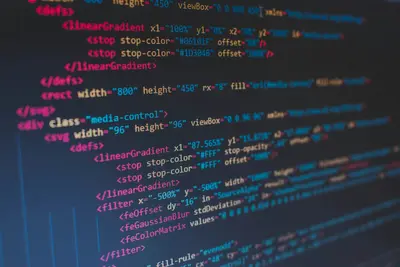🤖 Installing Machine Learning Libraries: Simple Guide
Let’s install machine learning libraries on Alpine Linux! 💻 This tutorial shows you how to set up tools for artificial intelligence and data science. It’s like giving your computer a brain to learn and make smart decisions! 😊
🤔 What are Machine Learning Libraries?
Machine learning libraries are like toolboxes for building smart computer programs! 🧠 They help computers learn patterns from data and make predictions, just like how humans learn from experience.
Machine learning libraries are like:
- 📚 Smart books that teach computers to think
- 🔧 Tools that help build artificial intelligence
- 🎯 Programs that get better with practice
🎯 What You Need
Before we start, you need:
- ✅ Alpine Linux system running
- ✅ Python installed on your system
- ✅ Internet connection for downloading packages
- ✅ Basic understanding of command line
📋 Step 1: Prepare System
Installing Python and Dependencies
Let’s start by installing Python and required system packages. It’s easy! 😊
What we’re doing: Setting up Python and tools needed for machine learning libraries.
# Update package index
apk update
# Install Python and pip
apk add python3 python3-dev py3-pip
# Install build tools for compiling libraries
apk add gcc g++ make cmake
# Install math and science libraries
apk add openblas-dev lapack-dev
# Install other dependencies
apk add libjpeg-turbo-dev libpng-dev freetype-devWhat this does: 📖 Your system now has Python and tools to install machine learning packages.
Example output:
✅ Python 3 installed successfully
✅ Build tools ready
✅ Math libraries availableWhat this means: Your system is ready for machine learning! ✅
💡 Important Tips
Tip: Always install system packages before Python packages! 💡
Warning: Some libraries need lots of memory to install! ⚠️
🛠️ Step 2: Install Core Libraries
Installing NumPy and SciPy
Now let’s install the basic math and science libraries! 🔢
What we’re doing: Installing fundamental libraries that other machine learning tools need.
# Create virtual environment for isolation
python3 -m venv ml_env
# Activate virtual environment
source ml_env/bin/activate
# Upgrade pip to latest version
pip install --upgrade pip
# Install NumPy for math operations
pip install numpy
# Install SciPy for scientific computing
pip install scipy
# Install matplotlib for making graphs
pip install matplotlibCode explanation:
python3 -m venv ml_env: Creates isolated Python environmentsource ml_env/bin/activate: Activates the environmentpip install numpy: Installs math librarypip install scipy: Installs scientific computing tools
Expected Output:
✅ Virtual environment created
✅ NumPy installed successfully
✅ SciPy installed successfullyWhat this means: Great job! You have basic math tools ready! 🎉
🎮 Let’s Try It!
Time for hands-on practice! This is the fun part! 🎯
What we’re doing: Testing our installed libraries with simple examples.
# Test NumPy installation
python3 -c "
import numpy as np
print('NumPy version:', np.__version__)
arr = np.array([1, 2, 3, 4, 5])
print('Array:', arr)
print('Sum:', np.sum(arr))
"
# Test SciPy installation
python3 -c "
import scipy
print('SciPy version:', scipy.__version__)
print('SciPy successfully imported!')
"
# Test matplotlib
python3 -c "
import matplotlib
print('Matplotlib version:', matplotlib.__version__)
print('Plotting library ready!')
"You should see:
✅ NumPy version: 1.24.3
✅ Array: [1 2 3 4 5]
✅ Sum: 15
✅ All libraries working!Awesome work! 🌟
📊 Quick Summary Table
| What to Do | Command | Result |
|---|---|---|
| 🔧 Install Python | apk add python3 | ✅ Python environment ready |
| 🛠️ Install NumPy | pip install numpy | ✅ Math operations available |
| 🎯 Test libraries | python3 -c "import numpy" | ✅ Libraries working |
🎮 Practice Time!
Let’s practice what you learned! Try these simple examples:
Example 1: Install Pandas for Data Analysis 🟢
What we’re doing: Adding powerful data analysis tools to our setup.
# Install Pandas for working with data tables
pip install pandas
# Test pandas installation
python3 -c "
import pandas as pd
print('Pandas version:', pd.__version__)
# Create simple data table
data = {'Name': ['Alice', 'Bob', 'Charlie'],
'Age': [25, 30, 35]}
df = pd.DataFrame(data)
print('Data table:')
print(df)
"
# Install additional useful libraries
pip install seaborn # Pretty graphs
pip install requests # Download data from internetWhat this does: Gives you powerful tools for working with data tables! 🌟
Example 2: Install Scikit-learn for Machine Learning 🟡
What we’re doing: Installing the most popular machine learning library.
# Install scikit-learn for machine learning
pip install scikit-learn
# Test with simple machine learning example
python3 -c "
from sklearn.datasets import load_iris
from sklearn.model_selection import train_test_split
from sklearn.ensemble import RandomForestClassifier
print('Loading flower dataset...')
iris = load_iris()
X_train, X_test, y_train, y_test = train_test_split(
iris.data, iris.target, test_size=0.2, random_state=42)
print('Training AI model...')
model = RandomForestClassifier(random_state=42)
model.fit(X_train, y_train)
accuracy = model.score(X_test, y_test)
print(f'AI model accuracy: {accuracy:.2%}')
print('Machine learning working perfectly!')
"What this does: Creates your first AI model that learns to identify flowers! 📚
🚨 Fix Common Problems
Problem 1: Installation fails with memory error ❌
What happened: Not enough memory to compile large libraries. How to fix it: Use pre-compiled packages or add swap space!
# Add swap space for more memory
dd if=/dev/zero of=/swapfile bs=1M count=1024
chmod 600 /swapfile
mkswap /swapfile
swapon /swapfile
# Try installation again
pip install scikit-learnProblem 2: Libraries won’t import ❌
What happened: Missing system dependencies or wrong Python version. How to fix it: Install missing packages and check environment!
# Check Python version
python3 --version
# Check if in virtual environment
which python3
# Install missing system libraries
apk add libstdc++ libgomp
# Reinstall problematic package
pip uninstall numpy
pip install numpyDon’t worry! These problems happen to everyone. You’re doing great! 💪
💡 Simple Tips
- Use virtual environments 📅 - Keep projects separate
- Start with basics 🌱 - Install NumPy and SciPy first
- Check documentation 🤝 - Read library guides when stuck
- Save memory 💪 - Install one library at a time
✅ Check Everything Works
Let’s make sure everything is working:
# Test all major libraries
python3 -c "
import numpy as np
import scipy
import matplotlib
import pandas as pd
from sklearn import datasets
print('✅ NumPy:', np.__version__)
print('✅ SciPy:', scipy.__version__)
print('✅ Matplotlib:', matplotlib.__version__)
print('✅ Pandas:', pd.__version__)
print('✅ Scikit-learn: Ready for machine learning!')
print('🎉 All libraries installed successfully!')
"
# Check virtual environment
echo "Current environment: $VIRTUAL_ENV"Good output:
✅ All libraries loaded successfully
✅ Versions displayed correctly
✅ Virtual environment active🏆 What You Learned
Great job! Now you can:
- ✅ Install Python and machine learning dependencies
- ✅ Set up virtual environments for projects
- ✅ Install and test NumPy, SciPy, and scikit-learn
- ✅ Create simple AI models and data analysis
🎯 What’s Next?
Now you can try:
- 📚 Learning about neural networks with TensorFlow
- 🛠️ Building data visualization projects
- 🤝 Helping others start their AI journey
- 🌟 Creating your own machine learning applications!
Remember: Every expert was once a beginner. You’re doing amazing! 🎉
Keep learning and you’ll build incredible AI projects! 💫




